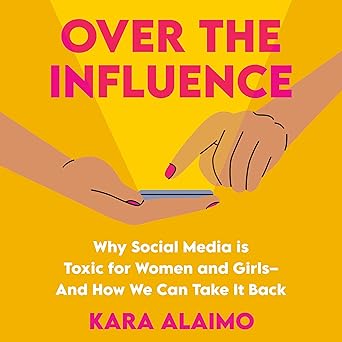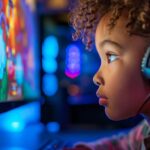Social media has irrevocably transformed the landscape of adolescent life, serving as a primary conduit for communication, information acquisition, and identity formation. Its ubiquitous presence in young people’s daily routines necessitates a critical examination of its multifaceted impact on their psychological, social, and cognitive development. While offering undeniable benefits, the digital realm also presents unique challenges that warrant careful consideration.
The Distorted Mirror: Navigating the Perils of Online Comparisons and Idealized Realities
Adolescence is a period marked by heightened self-consciousness and a relentless pursuit of social acceptance. Social media platforms often curate an idealized, and often unrealistic, portrayal of others’ lives, fostering a culture of comparison that can significantly undermine self-esteem.
- The Cult of Perfection: The curated nature of social media feeds, rife with filtered images and carefully crafted narratives, can lead adolescents to internalize unrealistic standards of beauty, success, and popularity. This phenomenon has been linked to increased body dissatisfaction and negative self-perception. (Tiggemann & Slater, 2004).
- Social Comparison Theory in the Digital Age: According to social comparison theory, individuals evaluate themselves by comparing themselves to others. The constant exposure to seemingly perfect lives on social media can trigger upward social comparisons, leading to feelings of inadequacy and envy. (Festinger, 1954).
- The Paradox of Connection: Online Isolation: While fostering digital connectivity, excessive social media use can paradoxically contribute to social isolation. The preference for online interactions over face-to-face engagements can hinder the development of essential social skills and exacerbate feelings of loneliness. (Primack et al., 2017).
Cyberbullying’s Shadow: The Pervasive Threat in the Digital Age
The anonymity and accessibility afforded by social media platforms create a fertile ground for cyberbullying, a pervasive issue with devastating psychological consequences.
- The Amplification of Aggression: The rapid dissemination of information online allows cyberbullying incidents to escalate quickly, reaching a wide audience and amplifying the victim’s suffering.
- Anonymity and Disinhibition: The perceived anonymity of online interactions can embolden individuals to engage in aggressive behaviors they might otherwise avoid in face-to-face settings. (Suler, 2004).
- Long-Term Psychological Impact: Cyberbullying has been associated with increased rates of depression, anxiety, and suicidal ideation among adolescents. (Hinduja & Patchin, 2010).
Cognitive Ramifications: The Impact on Attention and Critical Thinking
The constant stream of notifications and stimuli on social media platforms can significantly impact adolescents’ cognitive development.
- The Fragmentation of Attention: The multitasking demands of social media can contribute to fragmented attention spans and reduced ability to sustain focus on complex tasks. (Rosen, Carrier, & Cheever, 2013).
The Challenge of Information Literacy: Adolescents must develop critical thinking skills to navigate the vast and often unreliable information landscape of social media. The ability to distinguish between credible sources and misinformation is crucial. (Livingstone & Helsper, 2010).

The Bright Side of the Screen: Leveraging Social Media’s Positive Potential
Despite its challenges, social media offers valuable opportunities for adolescent development.
- Enhanced Social Connectivity: Social media platforms facilitate communication and connection with peers, fostering a sense of belonging and support.
- Creative Expression and Identity Exploration: Social media provides a platform for adolescents to express their creativity, explore their identities, and connect with like-minded individuals.
- Access to Information and Resources: Social media can serve as a valuable source of information on a wide range of topics, empowering adolescents to learn and engage with the world around them.
Guiding the Digital Generation: Strategies for Responsible Social Media Use
Parents, educators, and mental health professionals play a vital role in supporting adolescents’ healthy engagement with social media.
- Fostering Open Communication: Encouraging open and honest conversations about social media use can help adolescents navigate the challenges and develop responsible online habits.
- Establishing Healthy Boundaries: Setting clear guidelines regarding screen time, content consumption, and online interactions can help adolescents maintain a balanced lifestyle.
- Promoting Digital Literacy: Equipping adolescents with the skills to critically evaluate online information and identify misinformation is essential.
- Modeling Responsible Behavior: Parents and educators should model healthy social media habits and demonstrate responsible online conduct.
- Cultivating Real-World Connections: Encouraging participation in offline activities and fostering meaningful face-to-face relationships can help adolescents maintain a healthy balance between their digital and real lives.
Conclusion: Navigating the Digital Frontier
Social media is an integral part of adolescent life, presenting both opportunities and challenges. By fostering open dialogue, promoting digital literacy, and establishing healthy boundaries, we can empower adolescents to harness the benefits of social media while mitigating its risks. A balanced approach that prioritizes critical thinking, real-world connections, and mental well-being is essential for navigating the complexities of the digital age.












No Comment! Be the first one.